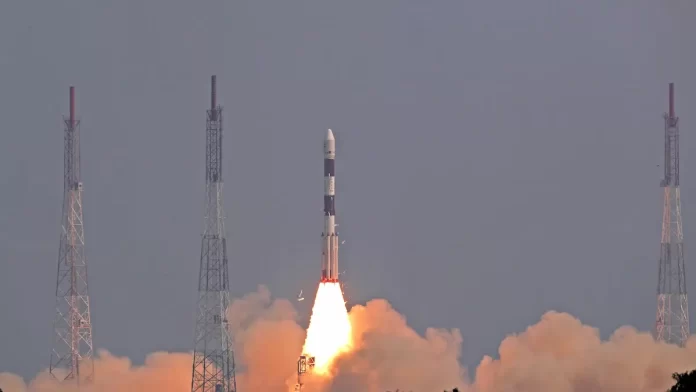India is set to embark on its third lunar exploration mission, Chandrayaan-3, on July 14, 2023.
Building upon the successes and lessons learned from Chandrayaan-2, this mission aims to achieve a soft landing on the lunar surface and conduct extensive scientific investigations.
With its advancements and potential for fruitful collaborations, Chandrayaan-3 promises to benefit not only India but also the global scientific community.
In this article, we delve into the various fields where India stands to gain from this mission, highlight some significant challenges, and shed light on its potential contributions to humanity’s understanding of the moon.
Chandrayaan-3’s primary objective is to achieve a soft landing on the lunar surface, making India the fourth country to accomplish this feat after the US, China, and the former Soviet Union.
This success would solidify India’s position as a formidable player in the realm of space exploration and open up new avenues for scientific research.
The mission’s focus on the south pole region of the moon holds immense significance. Scientists believe that this area might harbor water ice, a crucial resource for future space missions and potential human settlements.
By conducting rover operations and scientific investigations in this region, Chandrayaan-3 aims to gather valuable data that could aid in planning future missions and understanding the moon’s geological history.
Chandrayaan-3 incorporates numerous technological improvements and enhancements based on the lessons learned from its predecessor. The mission’s indigenous development showcases India’s prowess in space technology and its ability to undertake complex missions.
One notable improvement is the increased fuel capacity, which will extend the mission’s operational lifespan and provide more flexibility for scientific observations.
Additionally, the inclusion of more solar panels will enhance the power generation capabilities of the spacecraft, enabling extended periods of exploration.
To mitigate the challenges faced during Chandrayaan-2’s landing, Chandrayaan-3 has integrated hazard detection and avoidance systems.
These systems will enable the spacecraft to autonomously identify and navigate away from potential hazards, increasing the chances of a successful landing.
The mission’s failure-based design approach is another noteworthy feature. By learning from past failures, scientists and engineers have implemented design modifications to minimize risks and improve mission outcomes.
This iterative process is crucial for pushing the boundaries of space exploration and fostering innovation.
Chandrayaan-3 is not only an endeavor for India but also a platform for international collaboration. The mission aligns with the Artemis Accords, a set of principles for space exploration, which emphasizes peaceful and sustainable cooperation between nations.
As signatories of the Artemis Accords, India, the US, and other countries can benefit from shared expertise and resources. Collaborative efforts can lead to a deeper understanding of the moon and its resources, enabling a collective vision for future human space exploration.
Chandrayaan-3’s successful completion will instill a sense of national pride among Indians, showcasing the country’s technological capabilities and its dedication to scientific pursuits.
Such achievements inspire the younger generation to pursue careers in science, technology, engineering, and mathematics (STEM) fields, bolstering scientific temper and fostering innovation.
Furthermore, India’s advancements in space technology can have far-reaching economic benefits. The growth of the domestic space industry creates employment opportunities and drives the development of cutting-edge technologies.
The expertise gained from Chandrayaan-3 can also be leveraged for commercial applications, such as satellite launches and remote sensing, contributing to India’s economic growth.
Chandrayaan-3 represents a significant milestone in India’s space exploration journey, with its mission objectives spanning multiple domains.
The advancements made in technology, the potential for international collaboration, and the overall societal impact make this mission a momentous endeavor.
As India prepares to embark on this lunar exploration mission, the world watches eagerly, anticipating groundbreaking discoveries and the furtherance of our understanding of the moon.
Chandrayaan-3 serves as a testament to the indomitable spirit of scientific exploration and the power of collaboration in pushing the boundaries of human knowledge.
